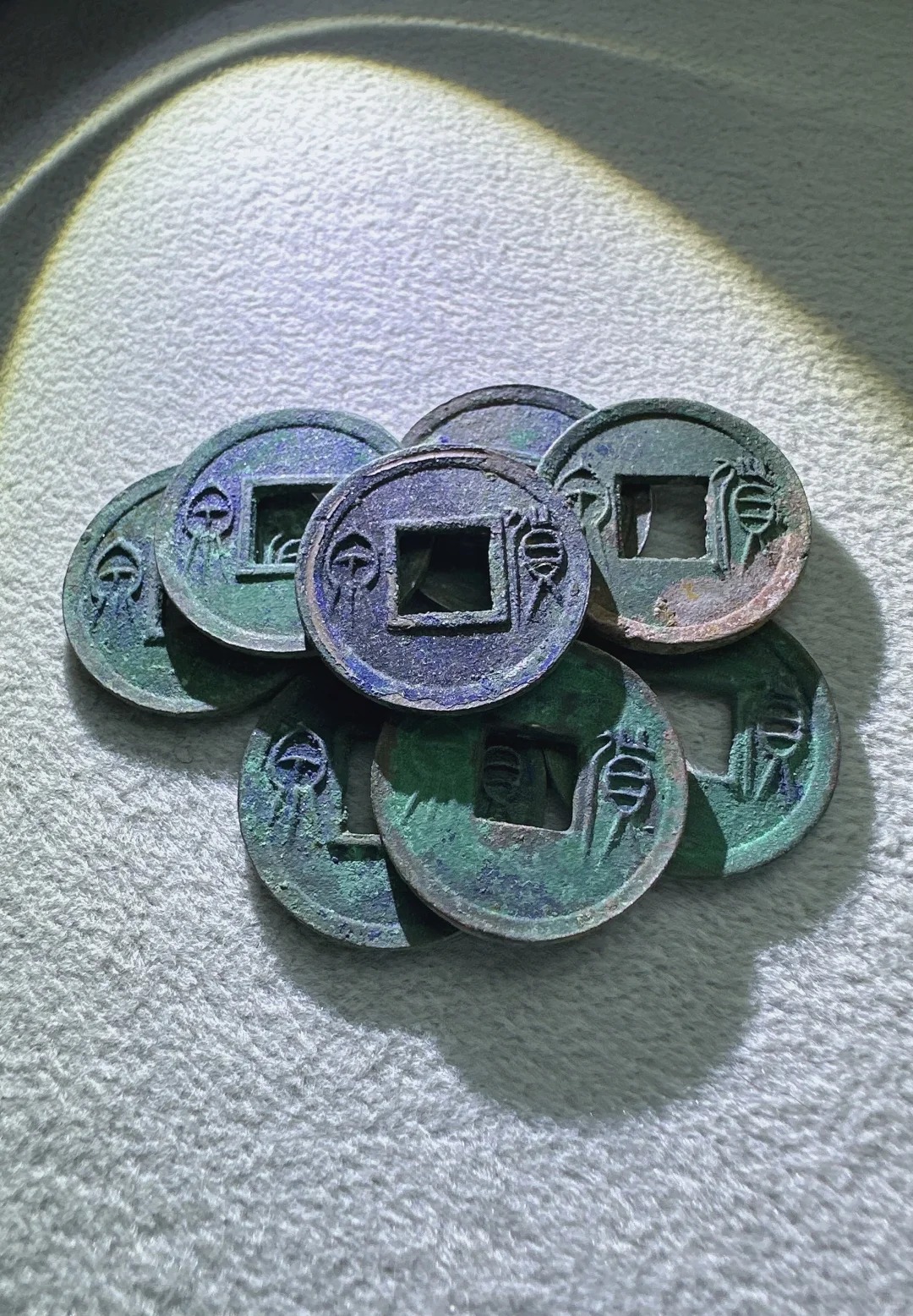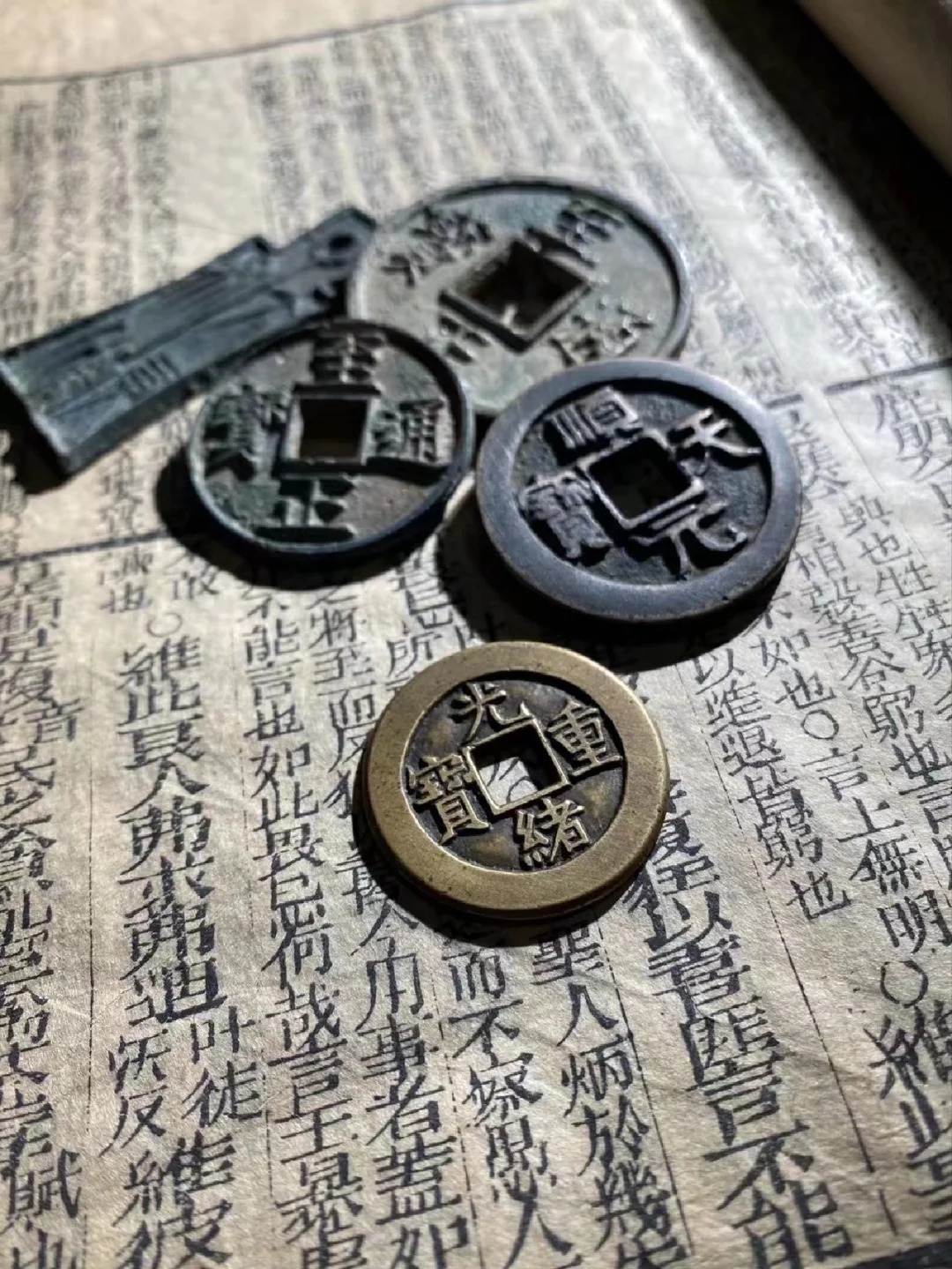Introduction to Old Chinese Coins
Chinese coins, with their rich history spanning over two millennia, offer a fascinating glimpse into the cultural and economic development of one of the world’s oldest civilizations. From the early spade and knife money to the iconic round coins with square holes, these ancient pieces of currency have played a crucial role in shaping China’s economic landscape.
More than just monetary instruments, old Chinese coins embody the philosophical, artistic, and technological advancements of their times. They serve as tangible links to China’s imperial past, each coin telling a story of the dynasty that minted it.
The main types of old Chinese coins evolved from primitive forms to standardized currency, reflecting the changing needs of a growing empire and its people.

Evolution of Chinese Coins Through Dynasties
Early Coins: Shaping the Standard
- Pre-Imperial Era: Spade and knife money, reflecting regional variations
- Qin Dynasty (221-206 BCE): Introduction of the Ban Liang coin, first standardized currency
- Han Dynasty (202 BCE-220 CE): Wu Zhu coins, setting the pattern for future designs
Refinement and Standardization
The Tang Dynasty (618-907 CE) marked a significant leap in coin production and design. The Kai Yuan Tong Bao, introduced in 621 CE, became a model for coins in subsequent dynasties, featuring clear inscriptions and uniform size.
During the Song Dynasty (960-1279 CE), coin minting reached its peak. The government established numerous mints, producing coins of exceptional quality and in vast quantities.
Late Imperial Coins
Ming (1368-1644) and Qing (1644-1911) Dynasty coins continued the traditional design but faced challenges from silver ingots and foreign currencies.

Symbolism and Design Elements
| Element | Significance | Example |
|---|---|---|
| Square Hole | Represents Earth, balance | Center of most coins |
| Round Shape | Represents Heaven | Outer circumference |
| Inscriptions | Dynasty, reign period | “Qian Long Tong Bao” |
| Symbols | Good fortune, longevity | Dragon, phoenix motifs |
Materials evolved from bronze in early coins to copper, brass, and even iron in later periods, often reflecting the economic conditions of the time.
Famous and Rare Chinese Coins
- Spade Money: Used in the Zhou Dynasty, shaped like farming tools
- “Flying Cash”: Tang Dynasty paper certificates, precursors to paper money
- Dragon Dollars: Silver coins from late Qing, blending Chinese and Western designs
- Sun Yat-sen Dollars: Early Republic of China coins, symbolizing modernization
Collecting Old Chinese Coins
For beginners, start with common coins from the Ming and Qing dynasties. Learn to distinguish authentic pieces by studying their patina, weight, and inscriptions.
Grading scales typically range from Poor to Uncirculated, with factors like wear, corrosion, and strike quality affecting value.
Resources for collectors:
- “Chinese Cash” by David Hartill
- International Chinese Cash Society (ICCS)
- Online forums like coincommunity.com

Cultural Impact and Legacy
Chinese coins have left an indelible mark on culture:
- Used in feng shui to attract wealth
- Tied with red string for good luck charms
- Featured in traditional Chinese medicine as diagnostic tools
- Inspirations for modern art and jewelry design
Today, the People’s Bank of China issues commemorative coins that pay homage to these ancient designs, bridging past and present.

Where to See and Buy Old Chinese Coins
Museums:
- Shanghai Museum: Extensive collection spanning all dynasties
- British Museum: Significant holdings of Chinese coins
- Smithsonian National Numismatic Collection: Diverse selection of Asian coins
Markets and Shops:
- Panjiayuan Antique Market, Beijing
- Dongtai Road Antique Market, Shanghai
Online Platforms:
- VCoins.com: Vetted professional dealers
- eBay: Wide selection, but buyer caution advised
When collecting, be aware of export regulations. China prohibits the export of coins minted before 1911 without proper permits.
Old Chinese coins offer a tangible connection to China’s rich past. Each piece, whether a humble copper coin or a rare silver dollar, tells a story of emperors, economies, and everyday life in ancient China. For collectors, historians, and culture enthusiasts alike, these coins provide a unique window into the evolution of one of the world’s great civilizations. As you hold a centuries-old coin in your hand, you’re not just touching a piece of metal, but grasping a fragment of history that has passed through countless hands and witnessed the rise and fall of dynasties. Whether you’re a seasoned numismatist or a curious beginner, the world of old Chinese coins invites you on a journey through time, art, and culture.





